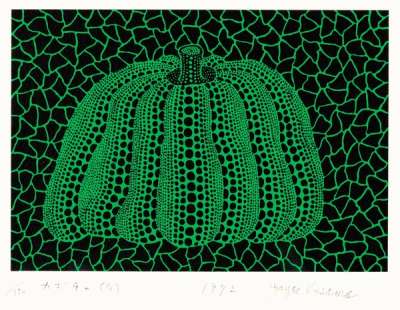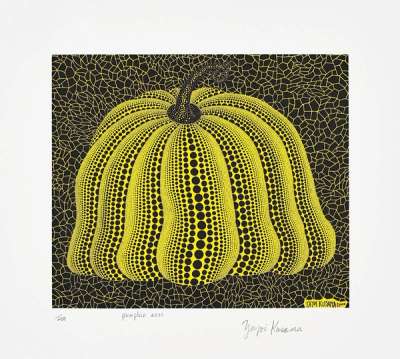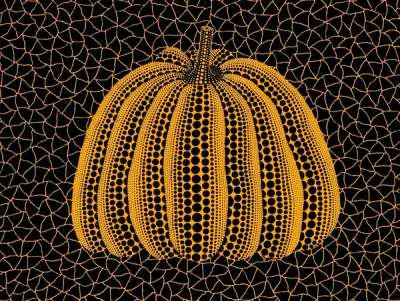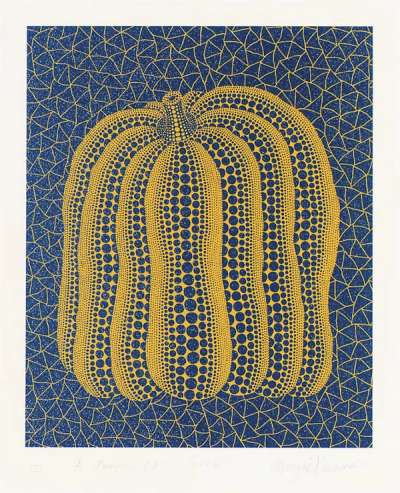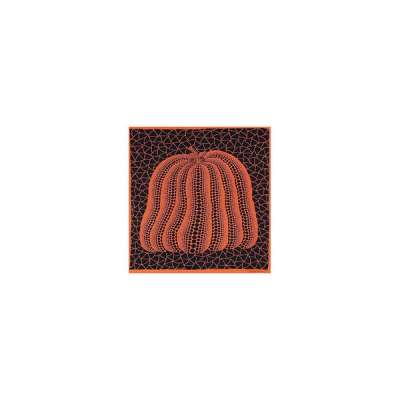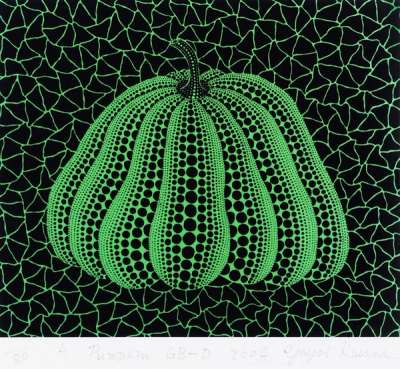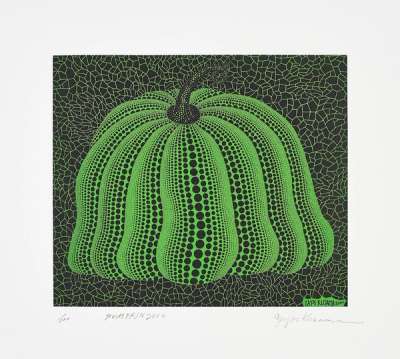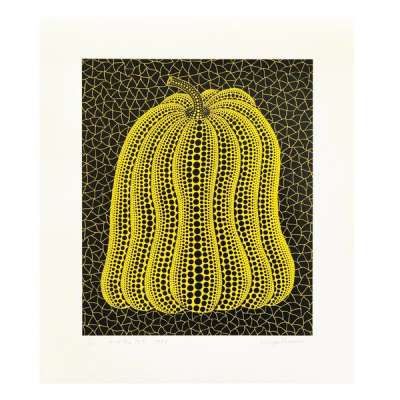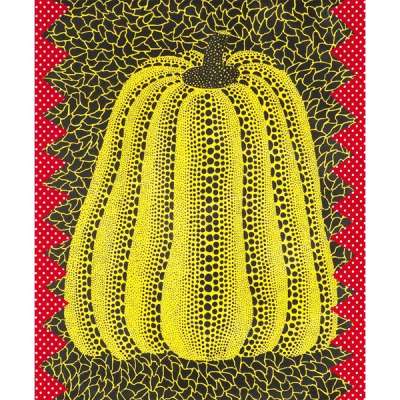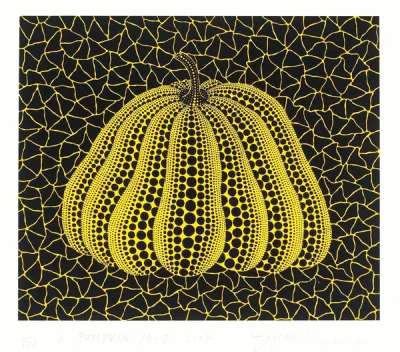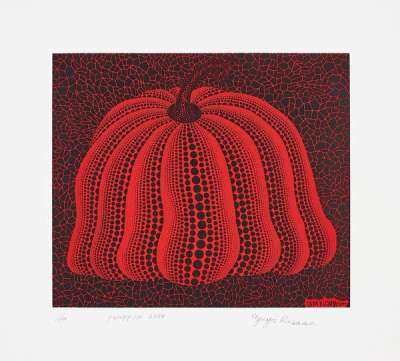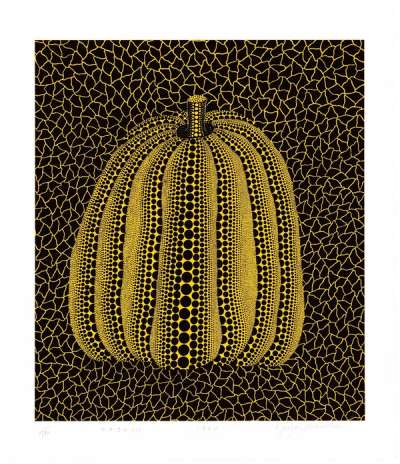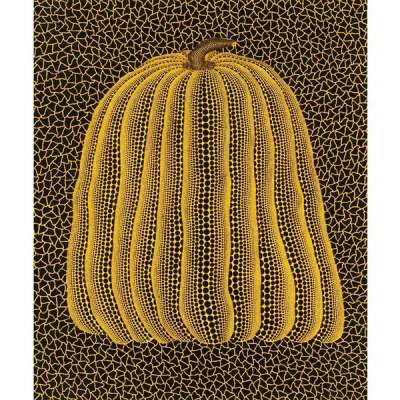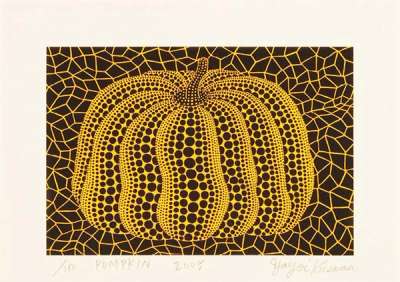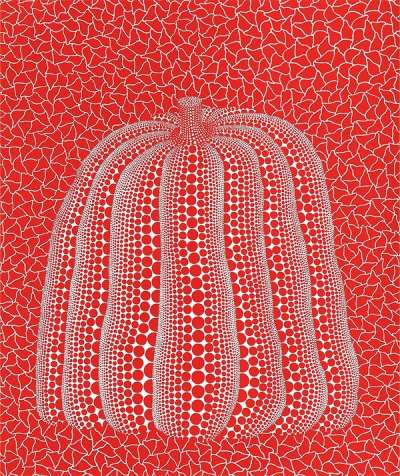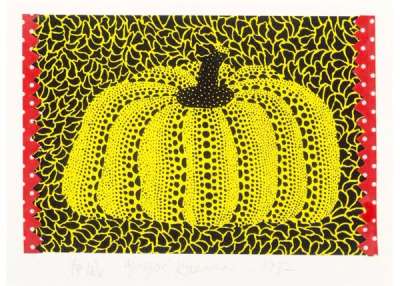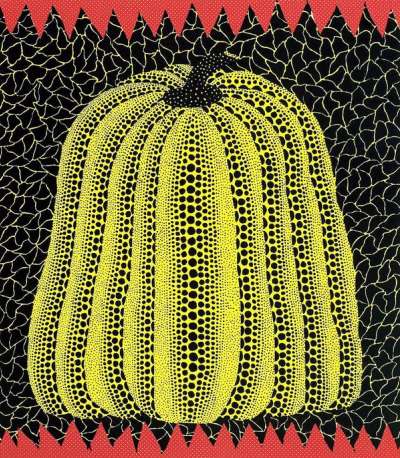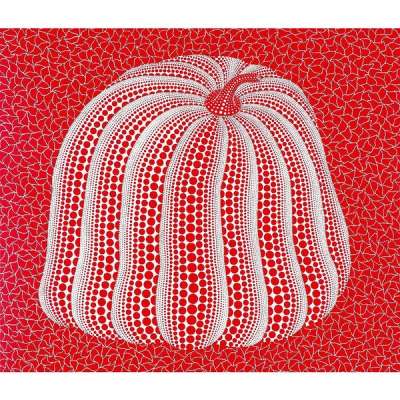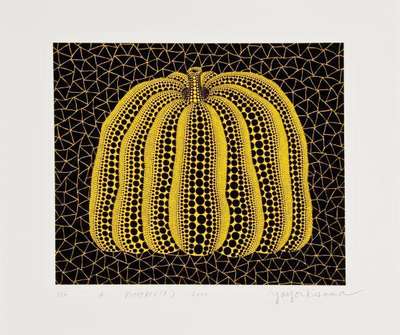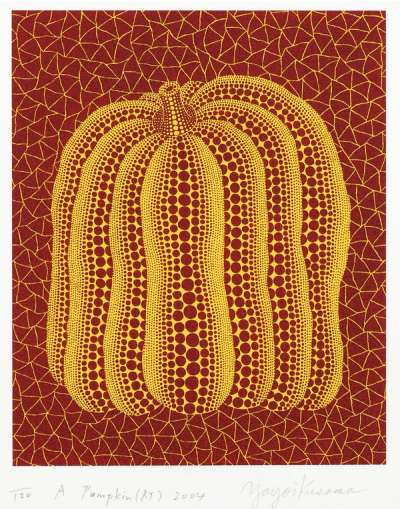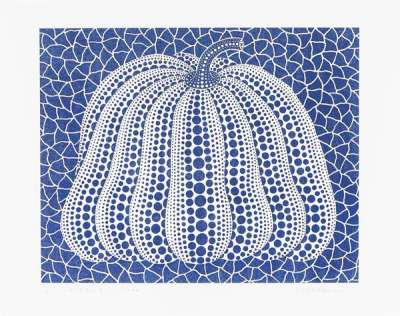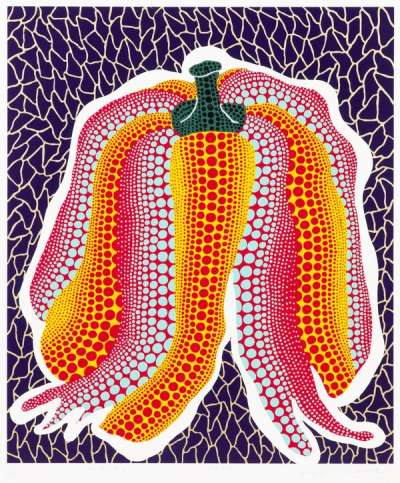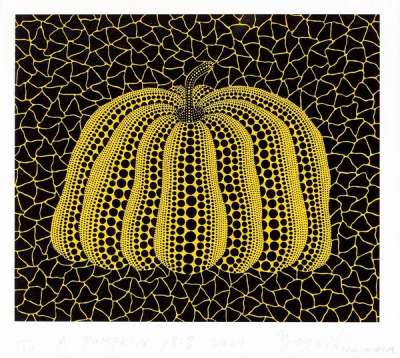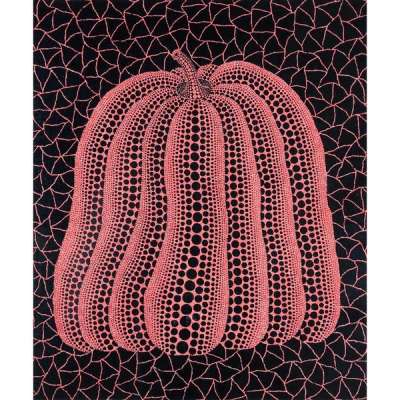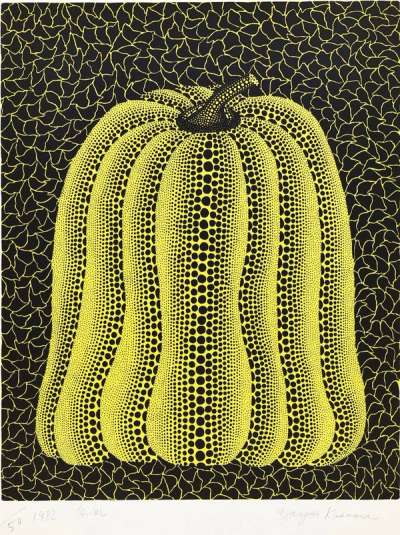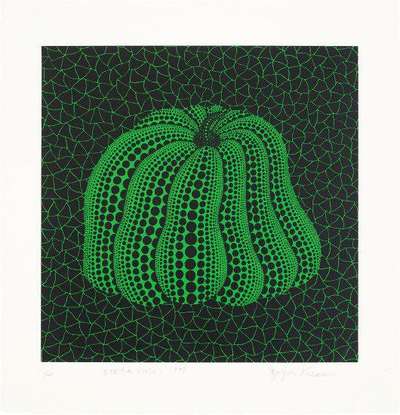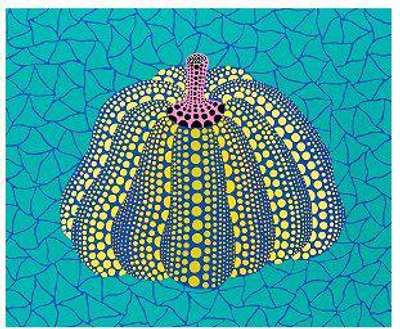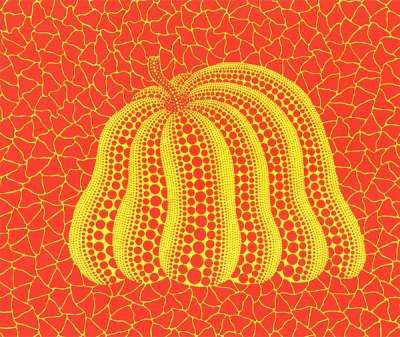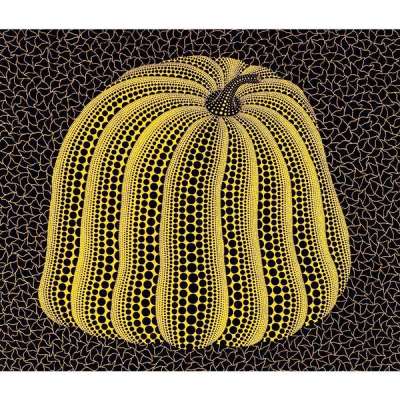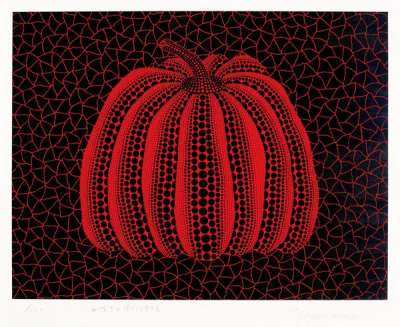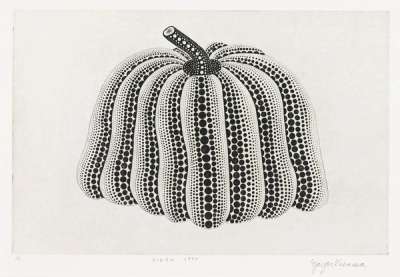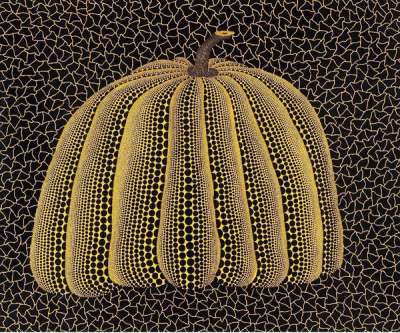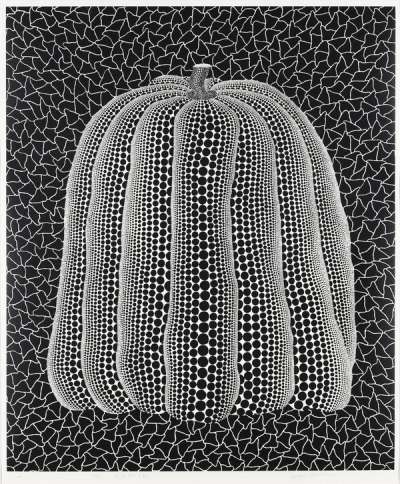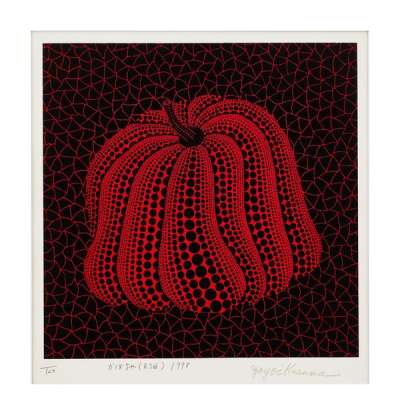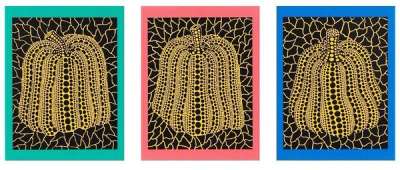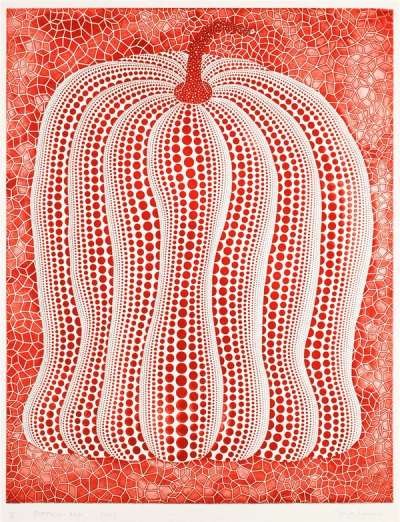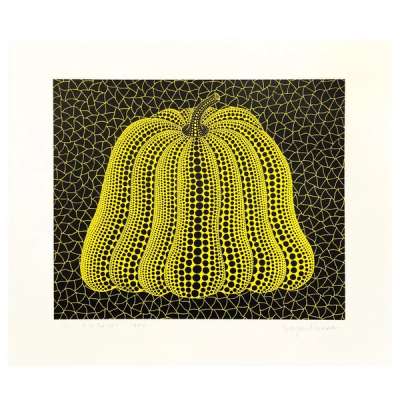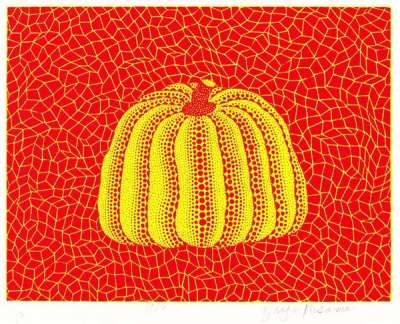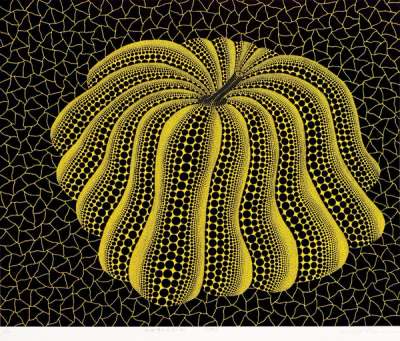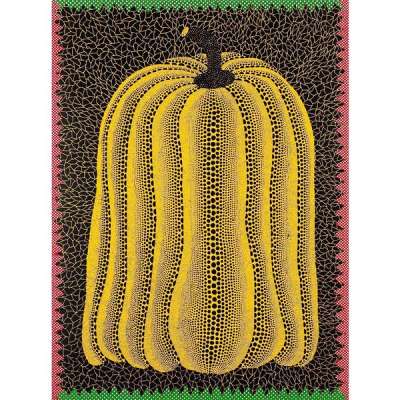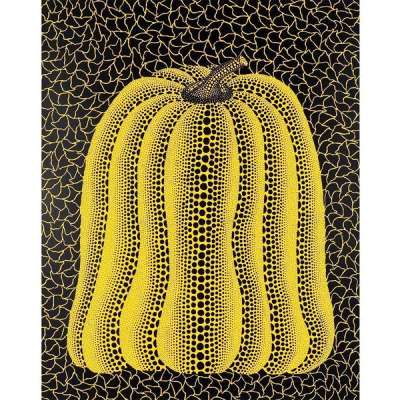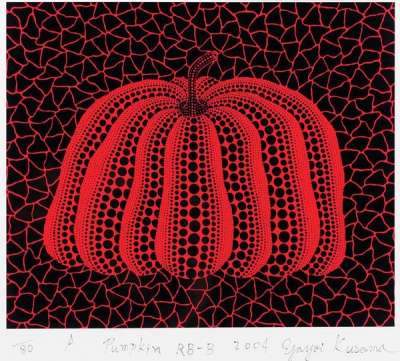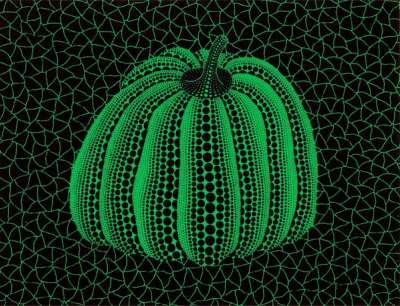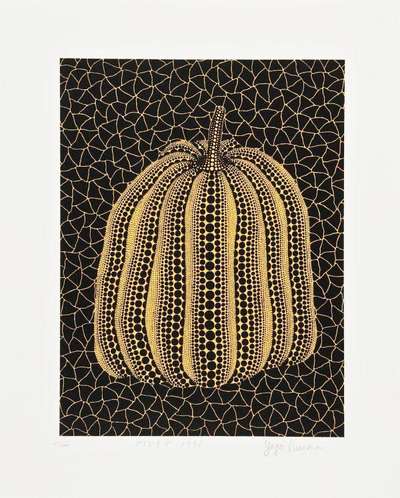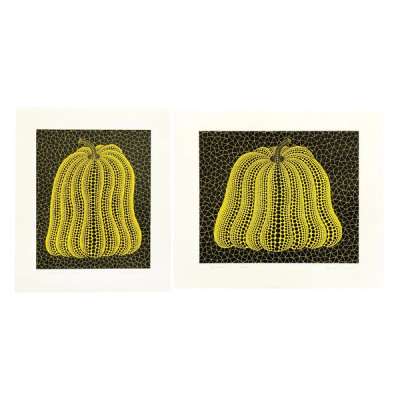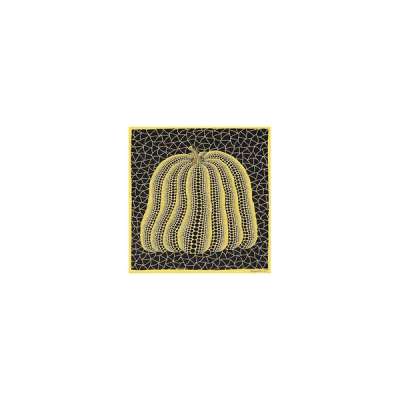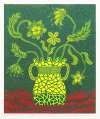Pumpkins
Yayoi Kusama was introduced to her now iconic pumpkin motif at an early age, thanks to her parents’ occupation as seed sellers. Her pumpkins, gourds or kabocha squash, are individually personified in their varied colouring and forms. Incredibly, they possess anthropomorphic postures—slumping or proud, large or diminutive.
Yayoi Kusama Pumpkins for sale
Sell Your Art
with Us
with Us
Join Our Network of Collectors. Buy, Sell and Track Demand
Meaning & Analysis
Yayoi Kusama created her first Pumpkin artwork, Kabocha (Pumpkin), as early as 1946, but her fascination with the vegetable stems from much earlier. Yayoi Kusama was introduced to her now iconic pumpkin motif at an early age, thanks to her parents’ occupation as seed sellers. Her pumpkins, gourds or kabocha squash, are individually personified in their varied colouring and forms, and have featured across mediums: in the artist’s paintings, as sculptures and in print. Explaining the reason behind her pumpkin obsession in a 2015 interview she stated, “I love pumpkins … because of their humorous form, warm feeling, and a human-like quality and form”. This much shines through in her pumpkin art, as she exaggerates the individually anthropomorphic postures of the pumkins, which range from slumping to proud, large or diminutive.
Yayoi Kusama’s sculptures of pumpkins embody her perception of the vegetable as warm and human-like. Making multiples of soft pumpkins, in collaboration with Tate, she reduplicates their fleshy, comforting texture; making large-scale public installations of metal pumpkins, she celebrates their “unpretentious and simple beauty”. Even on the grand scale of some of these latter works— the black and yellow pumpkin installed on the Naoshima Island, Japan is a vast, 6 foot by 8 foot, for example— the natural character of the pumpkin that Kusama identsifies fails to become intimidating or overly dominant, as so many large-scale public installations do. Yet this huge scale has its downfalls: in August 2021, for example, the Naoshima pumpkin suffered damage when it was swept into the sea by winds of up to 78 miles per hour.
Where her sculpted pumpkins gain much of their impact from their size and evocative plumpness, in print, it is Yayoi Kusama’s choice of colours that grabs the viewer’s attention. While many of these signed prints make use of Kusama’s classic black-yellow colouration (or variations on the two-colour theme), others make use of more elaborate palettes. Pumpkin (multicoloured) uses the colours red, yellow and pale blue on a purple background to evoke a sunset-hued vegetable. Her clever use of her dots to represent three-dimensional form, by grading her dots by size to shade the curves of the pumpkin, combined with the alternate pairing of yellow and red and blue and red evokes intermediary shades of pink that are not there. This 1990 screen-print is a exemplary demonstration of Kusama’s mastery of colour and her self-created dot technique to innovate in the age-old genre of the still life.
